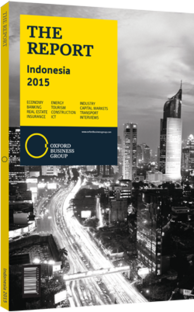Oil prices impact Indonesia's trade balance
Following a few challenging years that saw Indonesia’s trade balance fall into the red for the first time in years, the country’s trade deficit is rapidly shrinking in the wake of a decline in global oil prices. Although it reached nearly $2bn in 2014, the deficit still stood at less than half its 2013 level, while modest surpluses in early 2015 indicate the nation is beginning to benefit from falling oil prices, which are projected to remain depressed in 2015. Although the recent decision to eliminate fuel subsidies will present challenges should oil prices rebound, growth in value-added non-oil exports and a falling energy import bill are expected to see the nation’s trade balance swing back into the black in 2015.
Deficit
Indonesia witnessed its first annual trade deficit in decades in 2012, with exports falling by 6.61% over 2011 and imports rising by 8.02%, leading to a $1.63bn deficit. This deficit ballooned in the following year, reaching $4.06bn in 2013, according to Statistics Indonesia (BPS), as commodity prices dropped, exports declined and the country’s fuel bill rose.
In February 2014, BPS projected Indonesia’s trade deficit would remain at around $4bn for the year as a result of a ban on the export of unprocessed minerals that took effect in January. Unprocessed mineral exports brought in an estimated $2bn each month, and represent 10% of total exports. The government is pushing to establish value-added processing facilities, though these will likely take years to complete, and few expect growth in agricultural and manufacturing exports will be able to replace declining mineral revenues.
Shrinking Gap
During the latter half of the year, however, oil prices tumbled by over 60%, with Brent crude declining from $115 per barrel in June to a six-year low of $45 per barrel in January 2015. As a result of this rapid decline, newly elected President Joko Widodo was able to eliminate an expensive fuel subsidy programme, allocating an estimated $12bn in savings to capital expenditure in the revised 2015 budget as a result.
Economists initially worried that falling oil and gas revenues would hit the nation’s economy hard, and indeed, state-owned oil company Pertamina has announced plans to slash spending by up to 50% in 2015. However, the drop in oil prices appears to be ultimately beneficial for the Indonesian economy; oil and gas revenues accounted for 14.4% of Indonesia’s budget in 2014, according to research consultancy Stratfor, while fuel and electricity subsidies comprised 20% of the budget. According to the company, this subsidy elimination will give Indonesia a “comfortable buffer to expand spending on infrastructure and social services”, even if oil and gas revenues fall by half in 2015.
Indonesia, a net importer of energy since 2004, is therefore expected to join other ASEAN nations including Thailand and the Philippines in largely benefitting from falling oil prices, as reflected in the country’s 2014 trade deficit, which stood at $1.88bn, less than half of both the 2013 deficit and earlier BPS projections. According to BPS, imports reached $178.9bn, compared to $176.3bn in exports, with the oil and gas sector reporting a $13.1bn deficit, compared to an $11.24bn surplus in non-oil exports.
Surplus
Recent monthly surpluses indicate the balance shift will continue in 2015. In December 2014, Indonesia realised a trade surplus of $186.8m, well below the $1.5bn surplus recorded in December 2013, but still a nine-month high. Growth was driven by a $1.22bn surplus in the non-oil sector, compared to a $1.04bn deficit in the oil sector. The trade balance further improved in January 2015 to reach a $709.4m surplus, driven in large part by a 40% year-on-year decline in oil and gas imports, and demonstrating the net positive effect of falling oil prices and subsidy elimination.
This upwards trend is projected to continue through the year. Consultancy FocusEconomics announced in February 2015 that it expects exports will expand by 5.5% in 2015, projecting Indonesia will reach an $8bn trade surplus, with an even more positive forecast for 2016. According to the firm, exports in 2016 will expand by 12.2% to create a $15.9bn surplus, lending a positive outlook to mid-term growth and development.
You have reached the limit of premium articles you can view for free.
Choose from the options below to purchase print or digital editions of our Reports. You can also purchase a website subscription giving you unlimited access to all of our Reports online for 12 months.
If you have already purchased this Report or have a website subscription, please login to continue.

